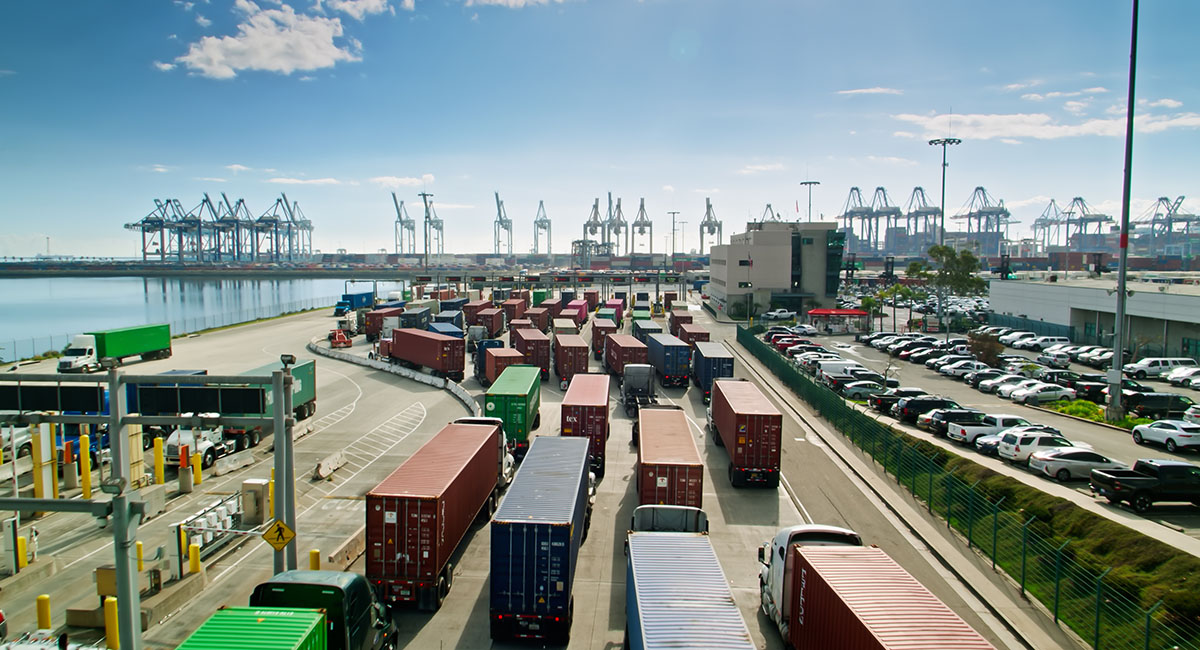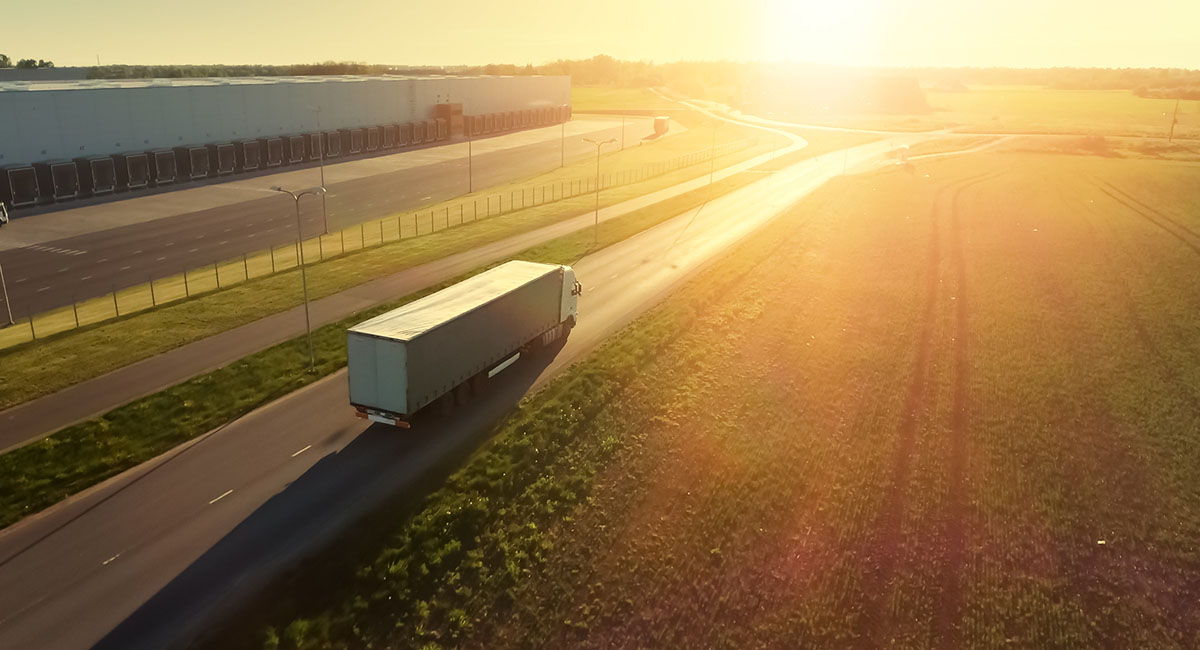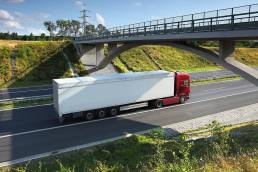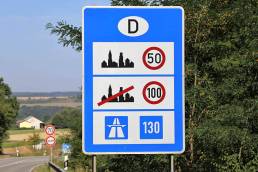Getting from A to B is supposed to be easier than ever before. But throw in rush-hour traffic, unpredictable diversions and constant roadworks, and drivers could be forgiven for reaching for their old paper maps.
As anyone will tell you, a poorly planned journey can be a huge source of stress for commuters and drivers alike. But this pales in comparison to the cost it has for businesses, with delayed and cancelled deliveries wreaking havoc on their customer base–and operating margins. In today’s fast-paced and competitive business environment, the need for efficient route optimization has never been more critical. Determining the most efficient path or sequence for a vehicle to complete a set of deliveries involves a complex interplay of factors including distance, traffic conditions, delivery windows, vehicle capacity, and fuel consumption.

Key points:
- Route optimization gives you and your fleet accurate, real-time information for the most efficient routing possible
- It can reduce your fleet’s running costs by up to 20% while increasing capacity – without the need to hire new drivers
- Routing tools also ensure your fleet can continue to run smoothly in the case of road closures, staff absence, or unexpected traffic
- One of the leading route optimization platforms, HERE, provides totally customisable route optimization with enterprise-grade integrations and mapping
Effective route optimization not only reduces operational costs but also enhances customer satisfaction by ensuring timely deliveries.
The rise of e-commerce and on-demand delivery services has significantly increased the volume of deliveries, putting immense pressure on logistics and transportation companies to streamline their operations. Traditional methods of route planning, which often relied on static maps and manual calculations, are no longer sufficient in addressing the dynamic challenges faced by modern-day logistics. Advanced technologies, such as GPS, machine learning, and real-time data analytics, have revolutionized route optimization, enabling companies to adapt quickly to changing conditions and make data-driven decisions.
If your organization relies on a fleet of drivers to get its work done, you’ll know only too well how much bad routing can affect the bottom line. In fact, the cost of staffing and fuel can make up 59.8% of operational costs per mile, meaning every second counts.
What is route optimization?
Route optimization is the process of determining the most efficient path for vehicles to follow when delivering goods or services. Simply put, route optimization tools improve driver routes to deliver speed, efficiency, and cost-effectiveness to your customers. This practice is crucial for various industries, particularly logistics, transportation, and delivery services, where efficiency and cost-effectiveness are paramount.
It brings together everything from flexible routing to driver schedules so that your fleet can deliver without delay.
With effective route optimization, you could drastically save on mileage and improve your order capacity without needing to increase the size of your fleet.
Key Elements of Route Optimization
Route optimization involves determining the most efficient paths for transportation, considering factors like distance, time, and cost. It’s key elements include advanced algorithms, real-time traffic data, vehicle capacity, and delivery constraints, all crucial for enhancing efficiency, reducing costs, and improving service reliability in logistics and transportation systems.
- Minimizing Distance and Time: The primary goal is to reduce the total distance traveled and the time spent on the road. This can be achieved by finding the shortest or quickest path that connects multiple stops.
- Cost Reduction: By optimizing routes, companies can significantly lower fuel consumption and vehicle wear and tear, thereby reducing operational costs.
- Improving Service Quality: Timely deliveries are essential for customer satisfaction. Optimized routes help ensure that deliveries are made within the expected time frames, improving overall service quality.
- Resource Management: Efficient routing allows for better utilization of vehicles and drivers. This means fewer vehicles on the road, which not only cuts costs but also reduces the environmental impact.
So how can route optimization deliver for you?
How does route optimization work?
Route optimization isn’t just about giving drivers directions. It covers every aspect of delivery logistics for your fleet, including:
- Driver schedules and time windows – route optimization algorithms are able to use driver schedule data as an input to ensure your fleet can arrive on time and even make multiple stops without delay
- Flexible, adjustable driver allocation – if a driver calls in sick or has a breakdown, route optimization tools are able to quickly allocate an alternative driver with minimal disruption and without the need for manual rescheduling
- Order management and process automation – modern route optimization solutions often use intelligent process automation to handle orders from end-to-end and turn these into effective driver routes
- Fleet scalability – route optimization makes it possible to quickly scale the size of your fleet at will, so that a boom in orders won’t result in a logistics nightmare
- Route accuracy – route optimization ensures your couriers can visit pickup and delivery points using the shortest path possible and return to their starting location with ease
Techniques and Technologies
Route optimization is crucial for enhancing efficiency in various logistics and transportation scenarios, employing several techniques and technologies.
One common technique is the use of shortest path algorithms. Dijkstra’s Algorithm, for example, finds the shortest paths between nodes in a graph, often representing road networks. The A* Algorithm enhances Dijkstra’s by using heuristics to speed up the search, while the Bellman-Ford Algorithm computes shortest paths from a single source vertex to all other vertices in a weighted digraph, capable of handling negative weights.
The Vehicle Routing Problem (VRP) is tackled using classic algorithms like the Clarke-Wright savings algorithm and the Sweep algorithm. Metaheuristics such as genetic algorithms, simulated annealing, Tabu search, and ant colony optimization, along with heuristics tailored for specific use cases, like split delivery or pickup and delivery problems, are also employed. Geographic Information Systems (GIS) utilize spatial data and geospatial analysis to inform and optimize routes.
Several technologies support route optimization. GPS and telematics enable real-time tracking of vehicle locations for dynamic routing and rerouting. Machine learning and AI provide predictive analytics to forecast traffic patterns, delivery times, and vehicle performance, with reinforcement learning used for adaptive route planning based on historical data. Cloud computing and big data offer high computational power and storage for processing vast amounts of routing data and performing complex optimization calculations, often integrating with IoT devices for real-time data collection and analysis.
Mapping and navigation software, such as Google Maps, HERE Technologies, and Mapbox, provide APIs for route planning and real-time traffic updates, while custom mapping solutions integrate with enterprise systems. Fleet management systems, including platforms like Verizon Connect, Samsara, and Geotab, offer comprehensive solutions that encompass route optimization, vehicle maintenance, and driver performance.

Mobile apps and devices provide drivers with optimized routes, updates, and instructions, using dash-mounted devices or mobile tablets that sync with central systems for real-time adjustments. Emerging technologies like autonomous vehicles and drones use advanced routing algorithms to navigate without human intervention, particularly useful in last-mile delivery and specialized transport scenarios.
Integration with traffic management systems, such as city-wide or regional systems, allows for optimizing routes based on current and predicted traffic conditions.
Applications of these techniques and technologies are widespread. In logistics and delivery, they optimize last-mile delivery, warehouse-to-store routing, and pickup and delivery scheduling. Public transportation systems use them to minimize travel time and improve service reliability. Emergency services ensure the fastest routes for vehicles based on current traffic and road conditions. Ride-sharing services, like Uber and Lyft, efficiently manage passenger pickup and drop-off routes.
By combining these techniques and technologies, organizations can significantly enhance the efficiency, reliability, and cost-effectiveness of their transportation and logistics operations.
Challenges in Route Optimization
Challenges in route optimization are multifaceted and require detailed consideration of several critical factors. Firstly, the complexity of route optimization escalates significantly with an increase in the number of stops. This complexity demands the use of highly sophisticated algorithms and substantial computational power to ensure efficiency and accuracy. The larger the number of stops, the more intricate the problem becomes, often requiring advanced techniques such as machine learning and artificial intelligence to handle effectively.
Secondly, routes often need to be adjusted in real-time due to a variety of unforeseen circumstances. These can include traffic jams, road closures, accidents, or last-minute delivery requests, all of which can disrupt planned routes. The ability to dynamically update and optimize routes in response to these changes is essential for maintaining efficiency and meeting delivery deadlines. This dynamic nature of route optimization adds an additional layer of complexity to the problem.

Furthermore, balancing multiple constraints is crucial to finding feasible routes. These constraints can include delivery time windows, which dictate when deliveries must be made; vehicle capacity, which limits the number and size of packages that can be transported; and driver working hours, which are regulated to ensure safety and compliance with labor laws. Each of these constraints must be carefully considered and balanced against one another to develop effective and efficient routing solutions. Failure to adequately address any of these constraints can result in suboptimal routes, increased costs, and dissatisfied customers.
Benefits
Efficient route planning offers numerous and substantial benefits. First and foremost, it leads to significant cost savings by reducing fuel consumption and maintenance expenses. These savings can accumulate over time, resulting in a notable financial advantage for businesses. Additionally, optimized routes have a positive environmental impact. With fewer vehicles on the road, there is a substantial reduction in emissions, which contributes to the broader goal of environmental sustainability.
Moreover, customer satisfaction is greatly enhanced through the timely deliveries and reduced delays that result from effective route planning. This punctuality fosters greater customer loyalty and can lead to increased repeat business. Furthermore, better route planning improves overall operational efficiency by making more effective use of available resources. This includes not only vehicles but also drivers and other logistical elements. As a result, companies can maximize productivity and ensure smoother day-to-day operations. In summary, the implementation of efficient route planning is a multifaceted strategy that benefits cost management, environmental efforts, customer relations, and operational performance.
What is the best route optimizer?
As you’ll know, there are dozens of mapping and navigation tools available. While they aren’t always perfect, apps like Google Maps and Waze help people get to where they need to go, and they’re great for individual drivers travelling from A to B.
However, working at scale requires dedicated solutions that combine a best-in-class mapping API with enterprise-grade logistics and location services.
One leading route optimization technology is HERE. As one of the world’s leading location platforms, HERE’s Routing API makes route optimization possible across multiple modes of transport, from supply trucks to electric cars.
It combines real-time and historical traffic data with actionable insights direct from your back-end to generate the best possible routes and insights for your drivers while they’re on their journey.

This includes alternative route suggestions, accurate ETAs, speed assistance, waypoints, live traffic alerts, and even lane assistance. It even offers information on parking, fuel, toll costs, and EV charging.
Critical to all this is HERE’s traffic-aware, time-sensitive route planning which accounts for real world congestion and incidents, seasonal road closures and schedule changes.
In practice, what this means is that your drivers have access to multiple, optimized routes and can choose between them to reach their destination as quickly as possible.
How does HERE maps work?
As well as giving drivers effective routes while on assignment, HERE’s route optimization technology gives fleet managers a birds-eye overview of the fleet in action, allowing you to work either on-premises or in the cloud thanks to its integration with SAP.
Its central operations dashboard gives you information on where drivers currently are, overall mileage, and comprehensive analytics on your fleet’s performance as they pursue the most cost-efficient sequence of stops.
Like your drivers, you’ll also have access to speed limit data and traffic flows as well as start and end locations. Most importantly, you’ll have access to historical data and statistics around past deliveries so you can improve service in future.
This not only reduces the number of failed or delayed deliveries. Using HERE’s route optimization features can reduce your fleet’s running costs by a whopping 20%, increase driver productivity, and even reduce re-routing time by as much as 90%. HERE can even be used to accurately profile driver risk for usage based insurance, enabling you to cut costs even further.
Conclusion
The route optimization solution of HERE is easy to fit into your organisation’s exact needs. The HERE API offers a huge amount of customization to its route optimization tools as well as a developer-friendly free plan with pay-as-you-go transaction pricing after 30,000 calls. With the help of a trusted partner, you can implement route optimization in no time.
By leveraging advanced algorithms, real-time data, and sophisticated software solutions, companies can achieve significant cost savings, improve service quality, and minimize their environmental impact. Despite the inherent challenges, the benefits of effective route optimization make it a crucial investment for businesses aiming to enhance their operational efficiency and customer satisfaction.
Local Eyes is one of Europe’s leading providers of location intelligence and data solutions, as well as the Netherlands’ main reseller and integrator of HERE Maps and other route optimization tools.
If you’re interested in learning more about route optimization or would like a free trial of HERE Maps, get in touch with Local Eyes today to learn about how you can take back control of your fleet






